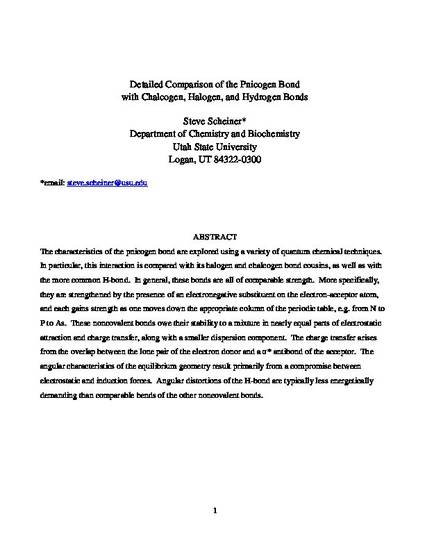
The characteristics of the pnicogen bond are explored using a variety of quantum chemical techniques. In particular, this interaction is compared with its halogen and chalcogen bond cousins, as well as with the more common H-bond. In general, these bonds are all of comparable strength. More specifically, they are strengthened by the presence of an electronegative substituent on the electron-acceptor atom, and each gains strength as one moves down the appropriate column of the periodic table, for example, from N to P to As. These noncovalent bonds owe their stability to a mixture in nearly equal parts of electrostatic attraction and charge transfer, along with a smaller dispersion component. The charge transfer arises from the overlap between the lone pair of the electron donor and a σ* antibond of the acceptor. The angular characteristics of the equilibrium geometry result primarily from a compromise between electrostatic and induction forces. Angular distortions of the H-bond are typically less energetically demanding than comparable bends of the other noncovalent bonds.
